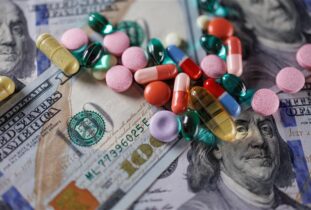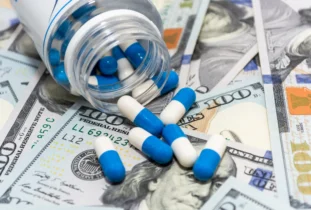Revenue leakage is a serious problem for many U.S. and European life sciences firms (pharma and biotech). According to recent research, the average mid-sized pharma company loses as much as 3% of revenue in supply chain inefficiencies, and the numbers are even worse for larger pharma manufacturers. At Model N, we have seen instances of as much as 6%. This represents billions of dollars annually in aggregate across the globe. Traceability – a major source of this problem – is something that track-and-trace technology could solve by putting accurate product-level data into the hands of life sciences manufacturers. But for track-and-trace systems to work, everyone in the supply chain must commit to them, and that’s something that not everyone is prepared to do.
With the industry at an impasse, we must examine the root causes of this problem, dive into the technological solutions available today, and finally, identify the necessary steps for a path forward.
The roots of the leakage problem
The primary causes of revenue leakages can be traced to inaccurate chargebacks, rebates, and returns.
Let’s focus on chargebacks, a common practice within the life sciences sales cycle. Chargebacks, payments made by manufacturers to wholesalers, allow manufacturers to offer discounts to certain customers while still maintaining a consistent price across the market.
Here’s how a chargeback typically works:
- A manufacturer sets a list price for its product.
- The manufacturer then negotiates product discounts with group purchasing organizations (GPOs), integrated delivery networks (IDNs), and healthcare providers. These discounts can be based on the volume or total revenue of eligible purchases, market share, and sales growth over a baseline, as well as many other terms that are agreed upon within the contract.
- When the distributor or wholesaler purchases the product from the manufacturer, it pays the list price (not including any fees or other remuneration negotiated directly between the manufacturer and wholesaler/distributor).
- When an order is placed by a healthcare provider through a wholesaler or distributor, it pays its contracted price (see #2), which is less than what the wholesaler or distributor has paid for the product it holds in inventory.
- To remain “financially whole,” the wholesaler or distributor submits a request for the difference between their sell-out price and purchase price. This difference is what is commonly referred to as “chargeback.”
The process may seem straightforward, but in reality, there are many opportunities for discrepancies along this path. New contracts, adjustments to pricing, and miscommunication between stakeholders can lead to misalignment. Meticulous recordkeeping and time-consuming cross-checking impact downstream processes such as rebates, fees, and sales compensation.
Returns are problematic for the same reason but can be much more difficult to resolve. A product shipped a year ago and then subsequently returned may have a different list and contracted price today than it had a year ago. Manufacturers are often forced to make assumptions to determine the pricing used to calculate the return, resulting in a negative chargeback. Oftentimes, a price is selected that is higher than the original price, leading to more money evaporating.
Some of the barriers to fixing these challenges are due to the complexity of the chargeback, rebate, and return processes, as they require manufacturers and supply chain partners to maintain detailed records of their transactions and agreements. This can create a burden on life sciences manufacturers and may increase the risk of errors or lead to disputes and disagreements between manufacturers and supply chain partners, particularly if there are discrepancies in terms of the agreement or if the records are incomplete or inaccurate. Disputes can lead to delays in payments and strain relationships between the parties, impacting current and future partnerships.
Track-and-trace systems: a promising technology
Track and trace technology can play an important role in reducing revenue leakage in the U.S. pharmaceutical industry by improving visibility and accountability throughout the supply chain.
“Track and trace” refers to the process of tracing the path of a drug product through its entire supply chain, from manufacturing to wholesaler to the end user. It involves the use of unique identifiers, such as serial numbers or barcodes, that are applied to each product at the point of manufacture. These identifiers are then used to track the product through every stage of the supply chain, including distribution, storage, and dispensing. This allows stakeholders to verify the authenticity of the product.
For example, track and trace technology can provide real-time data on the movement of products from the manufacturer to the end customer, including information on the quantity, location, and status of each unit. This data can be used to reconcile transactions and validate chargeback requests, reducing the risk of errors and disputes.
Track and trace technology can also help manufacturers identify potential sources of revenue leakage, such as instances where supply chain partners submit chargeback requests for products that were never received or were received in damaged or expired condition. By identifying these issues early on, manufacturers can take corrective action and minimize the impact on their revenue. The global track and trace solutions market is expected to grow at a CAGR of 8.3% over the forecast period 2022-2029 to reach $27.27 billion by 2029.
Track and trace systems can be used by the pharma industry to plug revenue leaks in a variety of ways.
- Improve visibility: Track and trace systems provide real-time data on the movement of life sciences products through the supply chain. This data can be used to identify any discrepancies in the inventory levels or prices at the time of sale. This improved visibility makes it easier to identify overpayments related to returns, impacting chargebacks, rebates, and downstream reporting.
- More efficient return handling: Returns can be a major source of overpayments in the life sciences industry. However, with track and trace systems, it is easier to track the movement of the exact products that are returned to the manufacturer or distributor. This can help ensure that only the right amount of credit is issued for returned products.
- Automate chargeback and rebate processing: Track and trace systems can be integrated with chargeback and rebate processing systems to automate the calculation and processing of payments. This can help reduce errors leading to overpayments.
What’s standing in the way of track and trace?
Despite the potential benefits of track and trace technology, there are several factors that are preventing its widespread use. Here are some of the major challenges:
- Cost: Wholesalers/distributors and pharmacies may be reluctant to invest in updates to their system to communicate key data elements captured in the track and trace process due to the costs associated with implementation. This is especially true for smaller distributors and pharmacies, which may have limited final resources.
- Complexity: Implementing a track and trace system can be complex and requires significant coordination between multiple stakeholders in the supply chain. This can be a challenge for wholesalers/distributors and pharmacies, especially if they have limited IT capabilities.
- Regulatory compliance: Wholesalers/distributors and pharmacies must comply with different regulatory requirements related to track and trace systems based on geography, which can be challenging to navigate.
- Interoperability: Wholesalers/distributors and pharmacies may need to integrate their track and trace systems with those of other stakeholders in the supply chain. Ensuring interoperability can be a challenge, especially if different systems use different data formats.
- Resistance to change: The life sciences industry has traditionally relied on paper-based processes and manual tracking methods. The adoption of new technology can be slow, especially if stakeholders are resistant to change.
When will life sciences organizations get the track-and-trace data?
Pharma and medtech manufacturers will need data from their supply chain partners. However, getting this data can be challenging for several reasons:
- Lack of standardization: Different supply chain partners may use different data formats, making it difficult to extract and process data from multiple sources. Without standardization, it can be challenging to aggregate data and gain a holistic view of the supply chain.
- Legacy systems: Many supply chain partners may still use legacy systems that are not compatible with modern track and trace systems. Extracting data from these systems can be time-consuming and require manual intervention.
- Data quality: The quality of data from supply chain partners can be a challenge. Incomplete, inaccurate, or inconsistent data can affect the accuracy of the track and trace system, making it difficult to identify the source of any problems in the supply chain.
- Lack of trust: Trust between supply chain partners is crucial for effective data sharing. If there is a lack of trust, supply chain partners may be reluctant to share data, especially if they perceive that the data may be used against them in any way.
Indeed the lack of trust between supply chain partners can be a significant barrier to implementing track and trace systems. To overcome this challenge, stakeholders in the supply chain must work collaboratively to build trust, establish clear communication channels, and agree on a framework for data sharing that protects the interests of all parties involved.
Life sciences organizations can incentivize supply chain partners to implement track-and-trace systems in several ways. For starters, manufacturers can offer financial incentives to supply chain partners. They could include fees in their contracts in exchange for providing track and trace data, for example.
They could also mandate that supply chain partners provide track and trace data as a condition of doing business. This requirement can be included in contracts, and compliance can be verified through audits.
Finally, life sciences organizations can develop long-term partnerships with supply chain partners to build trust and facilitate collaboration. By working together, partners can build strong working relationships that support increased data transparency and, as a result, drive the implementation of track and trace technology.
A multi-faceted approach is needed
Overall, incentivizing supply chain partners to provide valuable track and trace data requires a multi-faceted approach that involves collaboration, education, and financial incentives. By working together, life sciences manufacturers and their supply chain partners can implement effective track-and-trace transparency strategies that benefit everyone involved.













